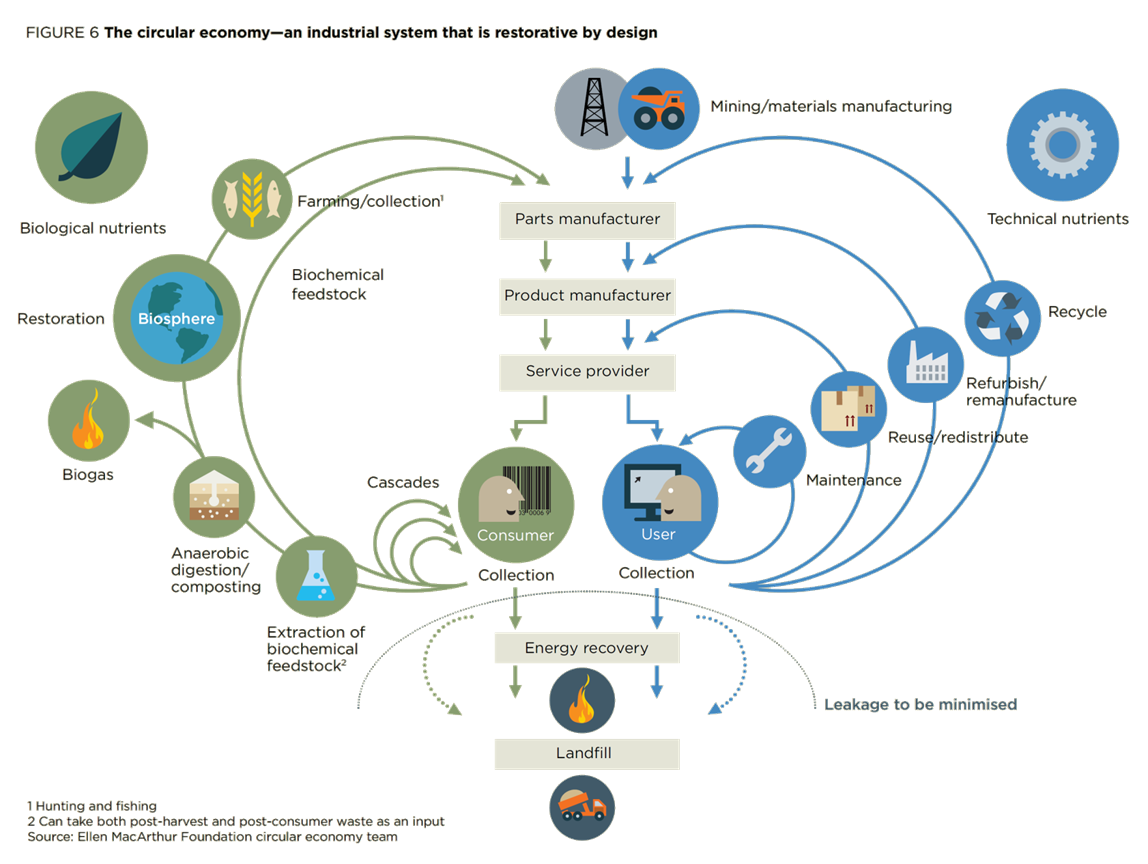

The circular economy is an important aspect of the thinking behind the scenes at lighting design studio and has a direct knock on effect as to how we design and specify our projects. In this blog we explain what it is and how we can apply ideas from the circular economy into your lighting schemes.
The typical model for production goes something like this; make, use and then chuck. We all know that we have a finite amount of resources in the world and how therefore this model isn’t sustainable. But it’s what we know so its often assumed that there is no alternative.
The circular economies aim is to get people to consider the impact of the products usage and in essence investigate ways in which we can reduce, reuse and recycle. This way the original material gets utilized much more fully within its life cycle before its inevitable and final disposal. This means that less raw materials are required and therefore there is a lower environmental impact.

The paradox for us as lighting professionals is that in some scenarios we light a room with more than one light source. So our schemes may use more lighting points than if an individual was to put a single pendant in their bedroom for example. That said we will often have a more considered approach so will typically use fewer points than other designers and contractors.
When considering the principals of the circular economy below are a few of the things that we consider when completing our lighting designs.
Reduce
When designing our schemes we often use the fewest and most energy efficient light fittings available to achieve the intended result. We can do this by calculating the exact illuminance required (based on current best practices) thus ensuring that the fewest number of fittings are used.
We use what we think are the best quality fittings for your budget so that the fittings last much longer and shouldn’t need to be replaced so frequently.
We consider control from the outset. This means a decreased energy output as we are dimming the lighting load depending on the time of day. We also put lights on automatic sensors where appropriate to reduce the buildings over all energy consumption.
We consider daylight from the outset and will encourage the most appropriate daylight systems to ensure that there is minimal artificial light required during daylight hours.
We reduce the environmental foot print of the products we specify by specifying locally sourced manufacturers for the project. This will ensure we have a lower overall carbon footprint as their transportation footprint will be lower – where possible have a preference for using British manufacturers for our UK projects.
We aim to use fittings that have a minimum plastic content.
We off set the carbon we generate as a business.
Repair/ Reuse/ Recycle
Architectural lighting
When we think of architectural light fittings typically the things that go wrong are the LED light source or the driver. Where possible we specify fittings that can have their original component pieces replaced or upgraded. This means that the body, heat sink and reflector can be used again and again.
It is possible to upgrade or retrofit existing non LED fittings – this can be done by taking the existing lighting envelope out and upgrading to an LED engine or retrofit style product. The main complication with this is that it is can be cheaper to buy a new one than get an existing product upgraded as there isn’t currently enough of a demand and infrastructure in place to enable this.
One thing that has been interesting to see the emergence of is the use of 3D printing as a viable alternative to injection moulding as the predominate manufacturing process. With Philips or Signify recently announcing the development of a plant in Holland where this was being done. The reason this is interesting as it takes into account the philosophy of manufacturer just for that particular project thus minimising waste, they advertise a 47% reduction in the carbon foot print of the fittings. https://www.signify.com/en-gb/our-company/news/press-releases/2019/20191114-signify-launches-tailor-made-3d-printed-professional-luminaires
What would be really exciting would be if we were able to 3D print items on building sites or at home then that would mitigate the need for any transportation costs. However currently there is still an over reliance on plastics within the 3d printing techniques which as we know are difficult to recycle.
Decorative lighting
When we are considering the decorative element of the scheme we do look for suppliers who have a greater track record of sustainably designed products or recycled component. Skinflint is a great example of a lighting company who has fully embraced this. https://www.skinflintdesign.com/
End of life
As with everything in life eventually things decline to an extend where they need to be disposed of or thrown away. – When this is done its important that its done properly to ensure that the original precious materials are recovered as much as possible or disposed safely.
WEEE
The UK provide the Waste Electronic, Electrical, Equipment recycling scheme which is funded by the electric manufacturers and is the government’s pledge to ensure that electrical items are recycled properly.
The WEEE Regulations state that:
“Producers of electrical and electronic equipment (EEE) are responsible for financing and ensuring the disposal of end-of-life products in an environmentally sound way arising from both household and non-household users.”
The main aim of the scheme is to remove & minimise presence of harmful contaminants into the environment. There are a few companies that help deliver these services. Most notably recolight who is the lighting industries voice in delivering recycling and safe disposal of lighting equipment.
https://www.recolight.co.uk/weee-info/lighting-producers-weee-obligations/
The circular economy is a holistic way of managing the production, use, and eventual disposal of products which we as lighting design studio fully embrace.